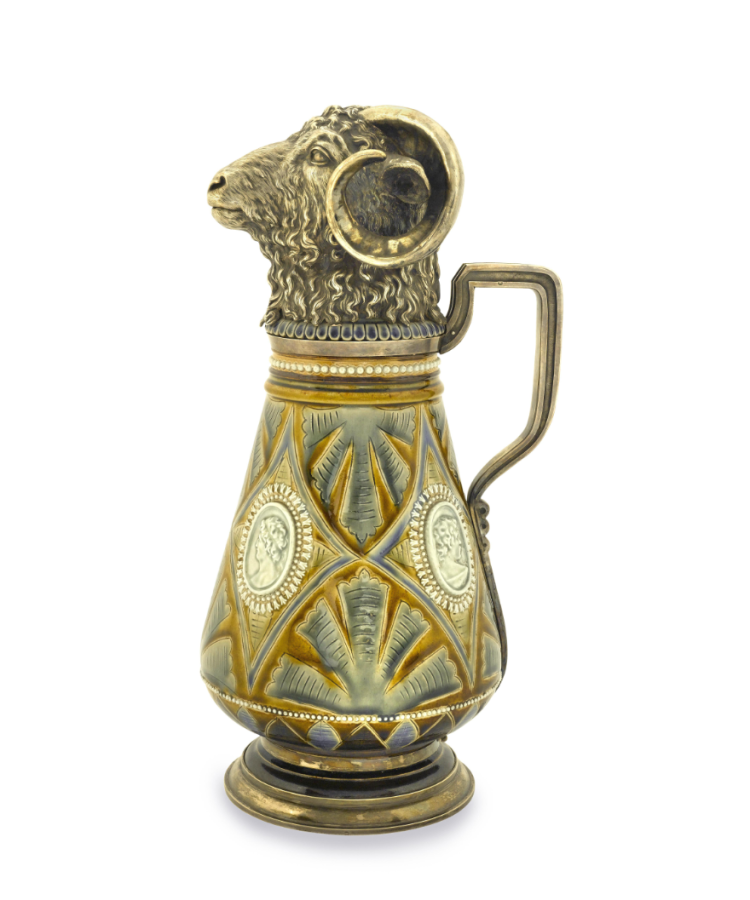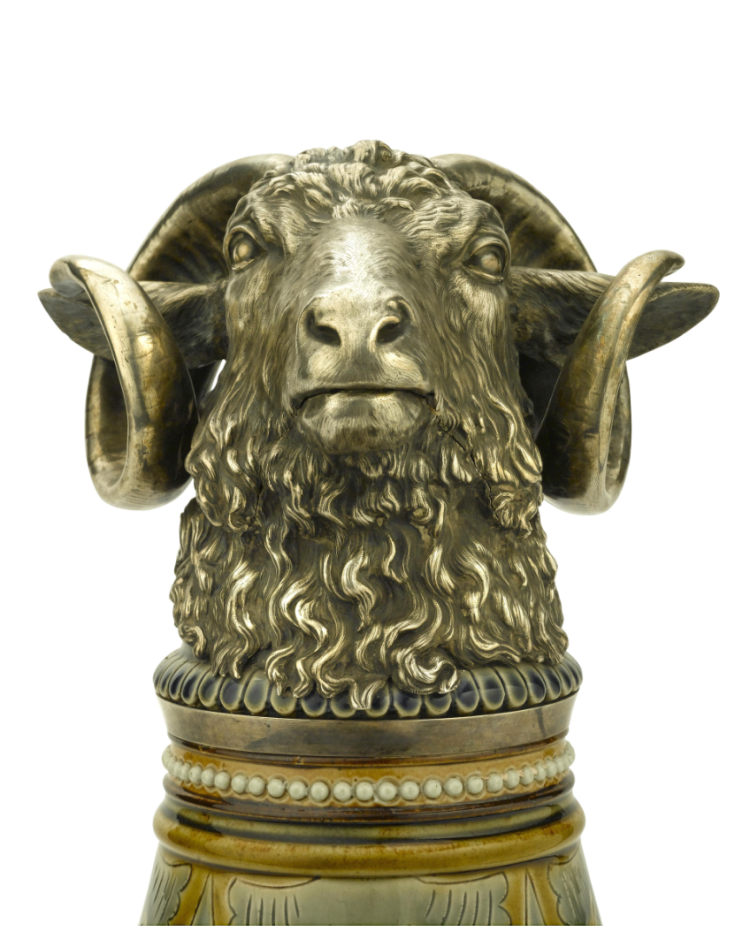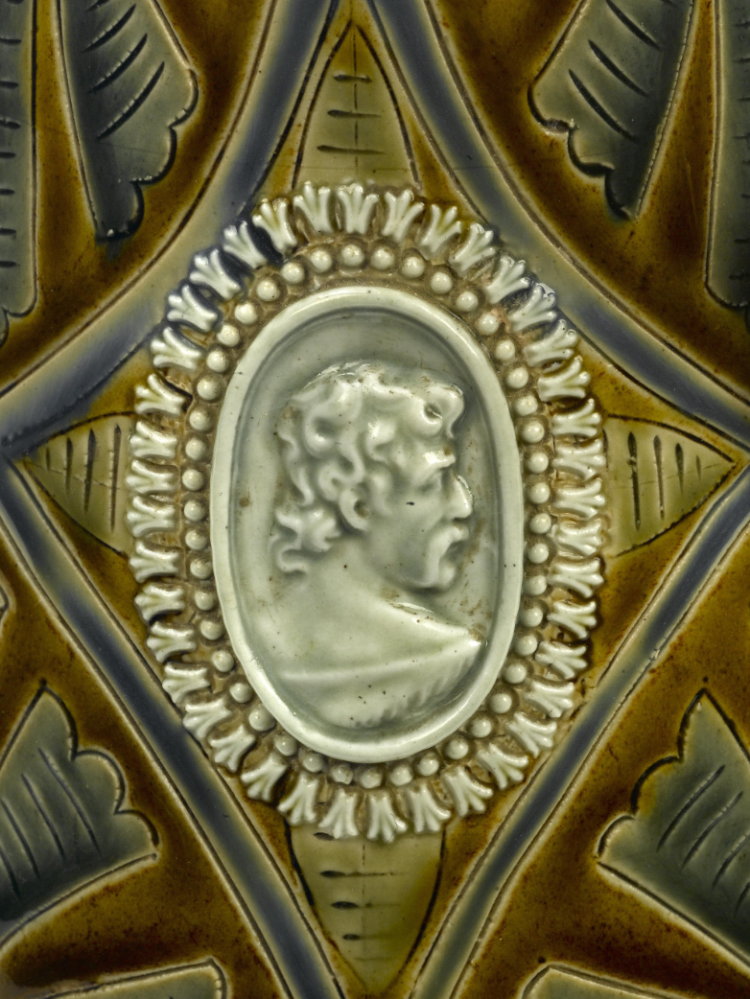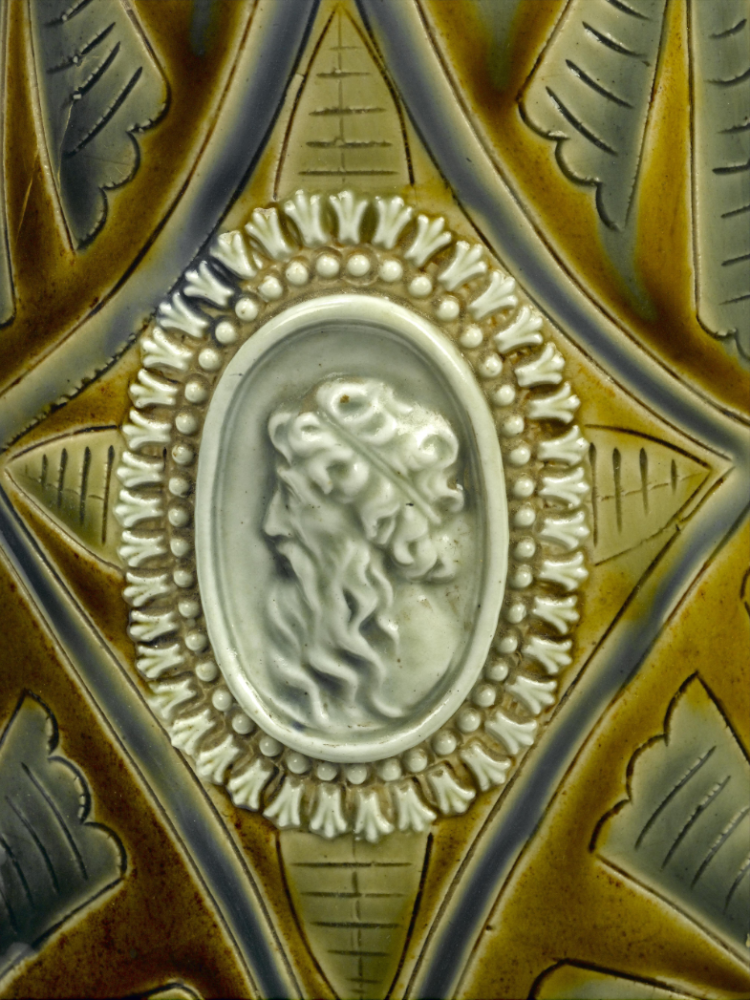This pitcher, topped with a silver ram’s head, is a prime example of the partnership between Russian and European artisans. The ceramic vessel was made by an English firm, while the casing was made by a workmaster at Nichols & Pinke in St. Petersburg.
The company’s owners, Charles (later Konstantin) Nichols and William Plinke, were born in England but swore allegiance to Russia in 1804. In 1808, the two became merchants of the 1st guild, and in 1829 they bought out the famous English Shop that had been the main supplier of table silver, bronze articles and jeweled haberdashery in St. Petersburg since the start of the 19th century. Nichols & Plinke were practically monopolists in supplying silver objets d’art to the imperial court.
The Nichols & Plinke English Shop was located in building 7/16 at the corner of Bolshaya Morskaya and Nevsky Prospekt in St. Petersburg. Between September 1855 and 1880, the Nichols & Plinke brand was also the regular supplier to the Capitulum of the Imperial and Tsarist Orders.
The English Shop remained open until 1898. Lacking their own workshops, the Nichols and Plinke commissioned famous firms and workshops to make their wares for them. The quality of the shop’s stock was widely considered a benchmark. Robert Kokhun, a merchant of the 1st guild, opened a factory of gold, silver and bronze articles under the shop’s banner and ran it from 1842 until 1879, while the sculptor R. Bach was responsible for its artistic direction. The factory employed 250 people.




